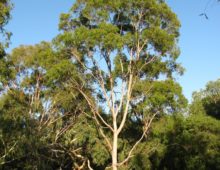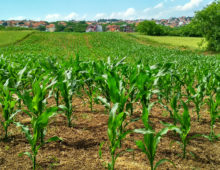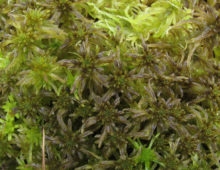Yeasts are some of the most important microbes used in biotechnology. Saccharomyces cerevisiae, the type of yeast used for making bread and beer, is just one representative of more than 1,500 yeast species found around the world. Currently, only a fraction of these yeasts has been harnessed for biotechnological applications. However, researchers studying various “non-conventional”…
Defining a Pan-Genome for Antarctic Archaea
Analysis of haloarchaeal metagenomes broadens understanding of Antarctic biogeography. The Science Haloarchaea flourish in hypersaline environments, and researchers are interested in learning how these microbes have learned to adapt from marine to hypersaline conditions by studying the microbial communities in Antarctic lakes, some of which have salinities 10 times that of seawater. To shed light…
High Five: Celebrating the JGI-UC Merced Genomics Internship Program
More than 20 UC Merced students have contributed to the research of 13 JGI scientists since the program’s inception. In 2014, JGI’s Zhong Wang and Science Programs Deputy Axel Visel teamed with University of California (UC), Merced assistant professor Suzanne Sindi from the School of Natural Sciences and started a program that offered a handful…
Corymbia Genome Expands Terpene Synthesis Knowledge
Genome annotations of two C. citriodora subspecies broaden understanding of the terpene synthase gene family across eucalypt lineages. The Science From the distinct smell of eucalyptus to the flavor of wine, terpenes are ubiquitous. A diverse group of plant-produced organic compounds, terpenes play key roles in plant growth, defense, and environmental interactions. Terpenes are also…
Advancing Awareness of User Science
Berkeley Lab User Facilities Prominent in SSURF Annual Meeting & Capitol Hill Office Visits. Like roads, water and energy systems, ports, and other critical infrastructure, scientific user facilities enable the innovation at the heart of U.S. economic competitiveness and national security. The Society for Science at User Research Facilities (SSURF) is a not-for-profit organization working…
Innovative Technology Improves Our Understanding of Bacterial Cell Signaling
Newly developed chemiluminescent biosensors shed light on how bacteria function and colonize diverse environments. The Science Cyclic di-GMP (Guanine Monophosphate) is found in nearly all types of bacteria and interacts with cell signaling networks that control many basic cellular functions. It plays an important role in regulating microbial cellulose production and biofilm formation, which affects…
A Personal Stamp on the IGB
Beam-Signing Ceremony Collects Signatures for Posterity. On Friday, June 22, JGI Director Nigel Mouncey and Systems Biology Knowledgebase (KBase) CEO/CSO Adam Arkin gathered JGI and KBase staff for a historic ceremony. “The last time we convened together was 18 months ago to break ground,” Mouncey reminded the audience, referring to the January 2017 groundbreaking ceremony…
Reproducibility Matters in Large-Scale Maize Study
Large scale study identifies core microbial community for maize rhizosphere. A plant’s health is affected not only by conditions such as water and temperature, but by the microorganisms that live around its roots. The rhizosphere microbiome, as this microbial community is known, regulates nutrient availability to the plant from the soil, and can impact plant…
Building Sphagnum Genomic Resources
Sphagnome data would enable researchers’ insights on their potential carbon cycling impact. The Science Enabled by the JGI’s Community Science Program (CSP), researchers are developing a number of resources to build up Sphagnum as a plant model system focused on carbon cycling studies, rather than for food or fuel applications. The Impact Sphagnum’s impact on…
DAS Tool for Genome Reconstruction from Metagenomes
Developing and validating an integrated approach to genome recovery from metagenomes. The Science Through the JGI’s Emerging Technologies Opportunity Program (ETOP), researchers have developed and improved upon a tool that combines existing DNA sequence binning algorithms, allowing them to reconstruct more near-complete genomes from soil metagenomes compared to other methods. The Impact Understanding how individual…









